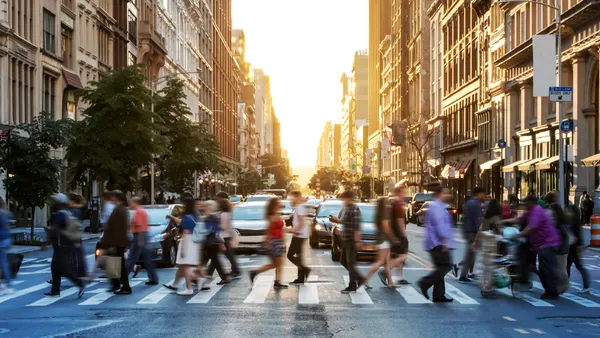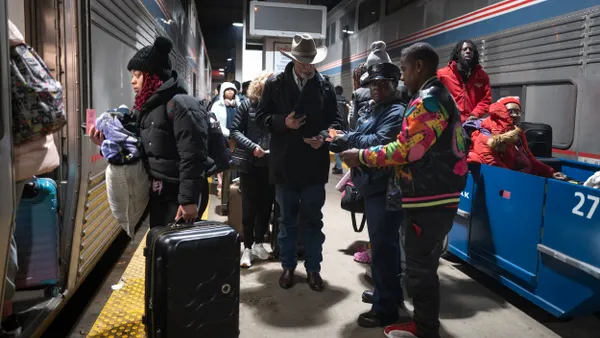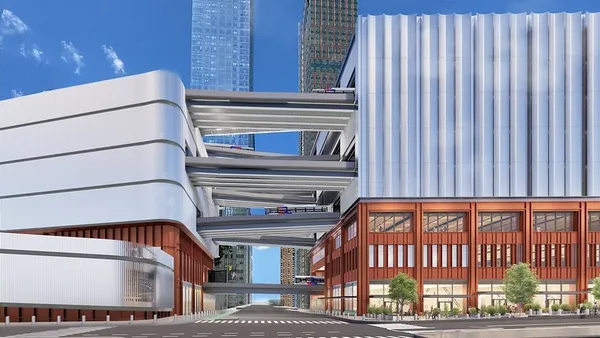Dive Brief:
- Boston has released an update to its Vision Zero roadway safety initiative.
- The report highlights completed and ongoing efforts over the past year, including reducing the default speed limit from 30 to 25 mph, improving priority corridors and targeted intersections, implementing the Neighborhood Slow Streets program and prioritizing projects to address inequality in transportation.
- The city's Vision Zero plan is part of its long-term, comprehensive transportation plan, Go Boston 2030.
Dive Insight:
Boston leaders lauded the progress on the Vision Zero plan but noted that there's still a lot to do to get to zero fatal pedestrian accidents. In its second annual review, the city said that 2017 brought 14 fatal crashes, down from 21 in 2016. Of the nearly 60 policies in the Go Boston 2030 plan, work has begun on about half of them.
Boston's speed limit reduced from 30 to 25 throughout the city in January 2017, and in August 2018 the Insurance Institute for Highway Safety found that the change might have affected driver behavior; the odds of drivers speeding dropped 8.5% for vehicles going faster than 30 mph and 29.3% for vehicles going faster than 35 mph. The city posted more than 100 new 25 mph signs and installed more digital feedback speed signs.
The Neighborhood Slow Streets initiative involved targeting certain neighborhoods to install traffic calming measures including speed bumps, crosswalks, temporary curb extensions and flexible guide posts.
Just implementing infrastructure and general policies for increasing pedestrian safety wasn't enough, though. Part of Boston's Vision Zero plan focuses on a new framework for equitable decision making. Leaders are to address inequities throughout the city and prioritize greater equity when making decisions, such as centering Vision Zero efforts on people who have more vulnerability in the street.
The Vision Zero update also names a number of priority areas for moving forward in 2018. Distracted driving is a perennial problem and the plan says, "[U]nless we address the problem of increasing use of electronic devices while driving, we will not reach our goal of zero traffic fatalities." Another focus area is school zones and installing new flashing beacons, which is what Savannah, GA did this year with an upgrade to its entire school zone beacon system.










